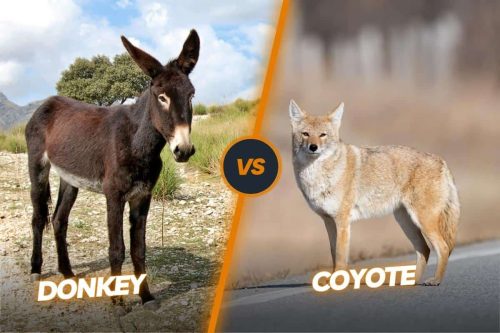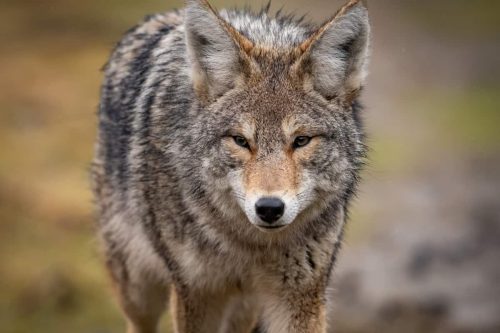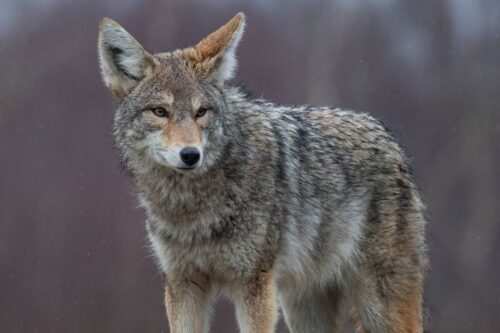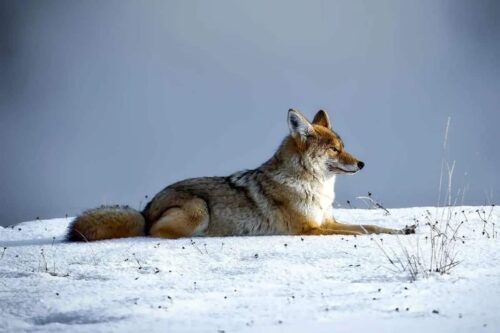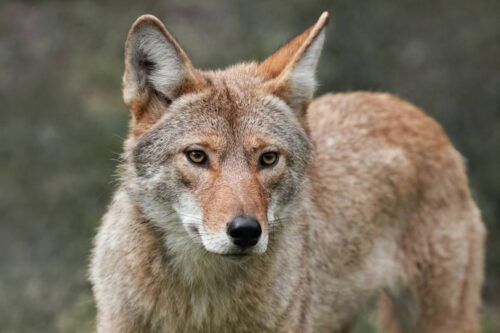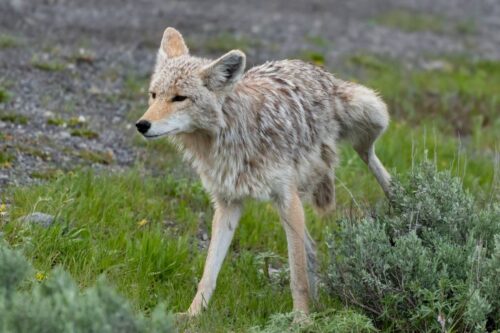How fast can a coyote run? – Breaking Down Speed Limits
Coyotes are known for their incredible speed, and it’s one of the reasons they’re such proficient hunters. On average, a coyote can run at a speed of 40 to 45 miles per hour (64 to 72 kilometers per hour). So this was the answer to how fast can a coyote run. However, this is different from their sustained speed. Like most animals, a coyote can’t maintain its top speed for extended periods.
In this article, about coyote speed, we’ll delve into the world of coyotes and explore the factors that contribute to their impressive running capabilities.
Before we dive into their speed, let’s get to know the coyote better. Scientifically known as Canis latrans, the coyote is a species of canine native to North and Central America. They are remarkably adaptable animals, often thriving in various habitats, from forests to deserts and even urban areas. Their slender, medium-sized build makes them swift and agile, making them excellent hunters.
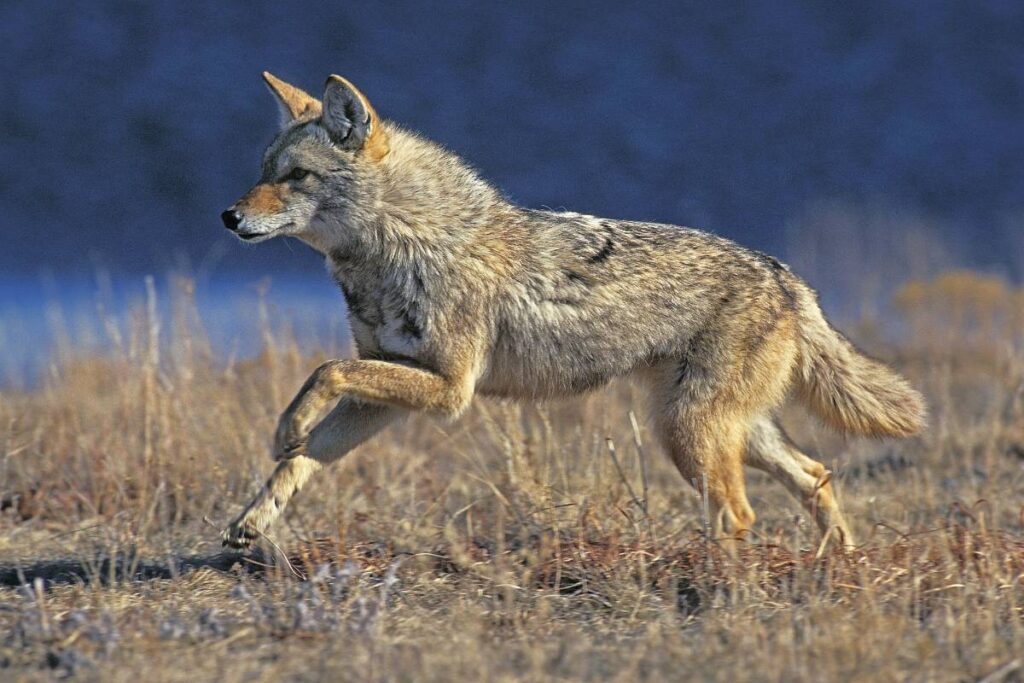
Contents
Factors Affecting How Fast Can A Coyote Run
Several factors influence a coyote’s running speed. One crucial element regarding this is the terrain. Coyotes can achieve higher speeds in open, flat areas with minimal obstacles. In contrast, rough or densely vegetated terrain may hinder their ability to reach top speeds. Let us discuss these aspects one by one.
The type of terrain plays a significant role in how fast can a coyote run. In open, flat areas such as grasslands or deserts, a coyote can reach its maximum speed of 40 to 45 miles per hour (64 to 72 kilometers per hour). These wide, unobstructed spaces allow the coyote to stretch its legs and utilize its full running potential.
However, in rough or densely vegetated terrains like forests or thick undergrowth, a coyote’s speed may be hampered. Obstacles such as fallen trees, rocks, or thick vegetation can impede their movements, making it challenging to let you decide how fast is a coyote. In such environments, coyotes may rely more on their agility and ability to change direction quickly rather than relying solely on top speeds.
Read more: can a coyote climb a tree?
Weather: Impact on Performance
Weather conditions can also affect coyote running. Like most animals, coyotes are more active during cooler periods, such as early morning or evening, when the temperature is more moderate. Hot weather can lead to fatigue and decreased performance, making it difficult for them to sustain top speeds for extended periods.
On the other hand, cooler weather can enhance a coyote’s endurance and overall speed, allowing it to cover greater distances in search of food or during pursuits. Additionally, weather elements like rain or snow may influence the terrain, potentially hindering coyote speed or aiding their movements, depending on the conditions.
Age and Health: Vital Factors
The age and health of a coyote are crucial determinants of its running abilities. Younger coyotes tend to be more energetic and agile, exhibiting higher bursts of speed compared to older individuals. As coyotes age, their physical prowess may decline, impacting their capacity to achieve top speeds.
Similarly, the health of a coyote plays a vital role in its running performance. An injured or sick coyote may experience reduced mobility and struggle to run at its usual speeds. Conversely, a healthy coyote in its prime will be better equipped to reach and sustain top speeds, ensuring its success as a predator.
The Balance of Adaptation
Coyotes have evolved to adapt to various environments and circumstances. While they may not always rely on top speed alone, their ability to adjust their running style based on terrain, weather, age, and health allows them to be successful hunters and survive in diverse ecosystems.
Despite these facts, what other aspects may affect the speed and agility of a coyote, are sequence-wise discussed below:
Coyote’s Speed Comparison to Other Animals
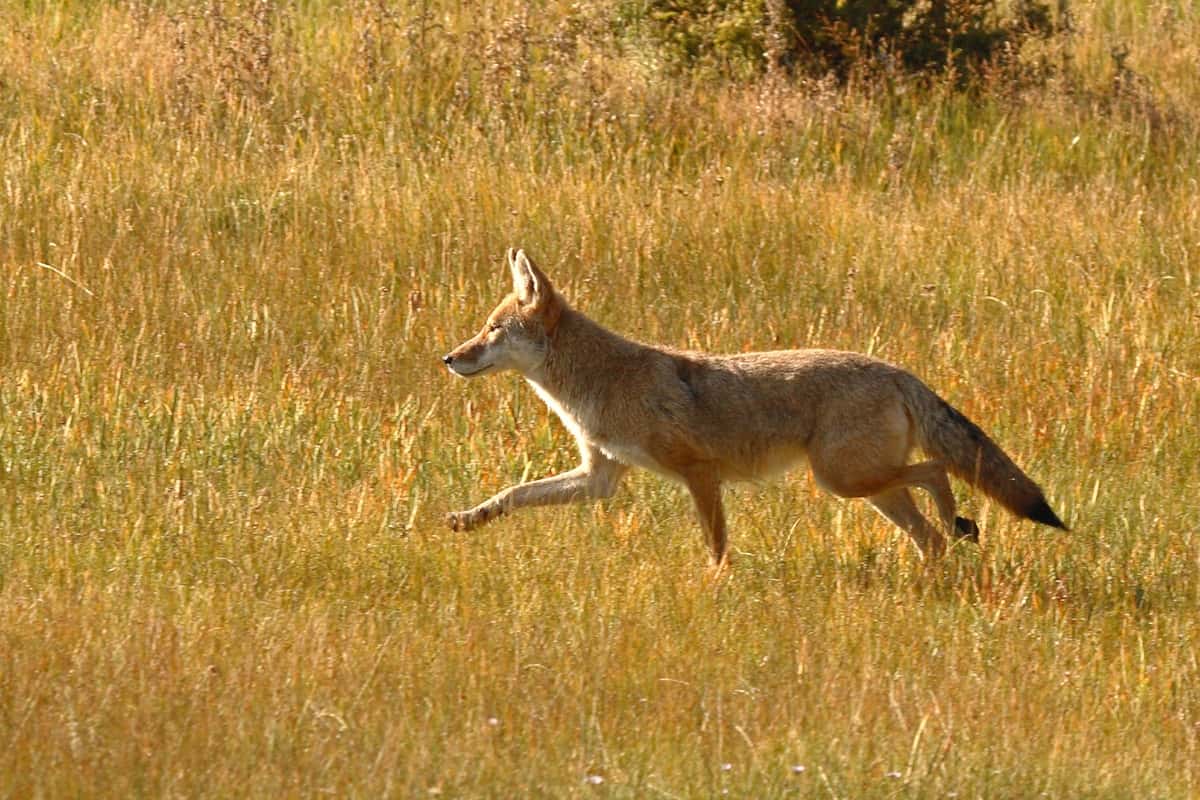
When it comes to the comparison of coyotes’ speed to other animals, we are not talking about a race or marathon. Animals especially don’t run that way. Their race is for life and death when they are prey or hunter. The same is the case with Coyote and the result of the query, how fast are coyotes. These opportunistic hunters rely on their speed and intelligence to catch prey.
They often employ a hunting technique known as “course hunting.” This strategy involves spotting prey from a distance and then initiating a chase. By utilizing their bursts of speed, coyotes can close the gap quickly and seize their target. At that time, their speed most of the time depends upon the speed of their prey, and it can vary tremendously. As the speed of a coyote may vary at that time, we would like to compare it with various prey and predators.
Speed of Coyote vs. Other Predators
When comparing the coyote’s running abilities to other animals or how fast can a coyote run as compared to other animals, it holds its own in the canine family. Domestic dogs, the coyote’s evolutionary cousins, can achieve similar speeds. However, faster runners such as the cheetah and pronghorn surpass the coyote in the broader animal kingdom. The cheetah, known for its incredible speed, can reach up to 60 to 70 miles per hour (97 to 113 kilometers per hour) in short bursts.
Coyote Speed vs. Wolf Speed
The coyote and the wolf belong to the canine family and share some common traits, including speed. However, there are some notable differences in their running abilities. On average, a coyote can run at speeds of 40 to 45 miles per hour (64 to 72 kilometers per hour). On the other hand, the wolf is slightly faster, capable of reaching speeds between 35 to 40 miles per hour (56 to 64 kilometers per hour). While the difference might not seem significant, it could play a crucial role in the success of their hunting pursuits.
Wolves are often pack hunters, and their cooperative hunting strategy allows them to bring down larger prey, compensating for their slightly lower top speed. In contrast, coyotes are more opportunistic hunters, often relying on their speed and agility to catch smaller prey or scavenge for food. The variance in their running speeds complements their unique hunting techniques, each adapted to suit their ecological niche that decides coyotes running speed in such a situation.
Coyote Speed vs. Fox Speed
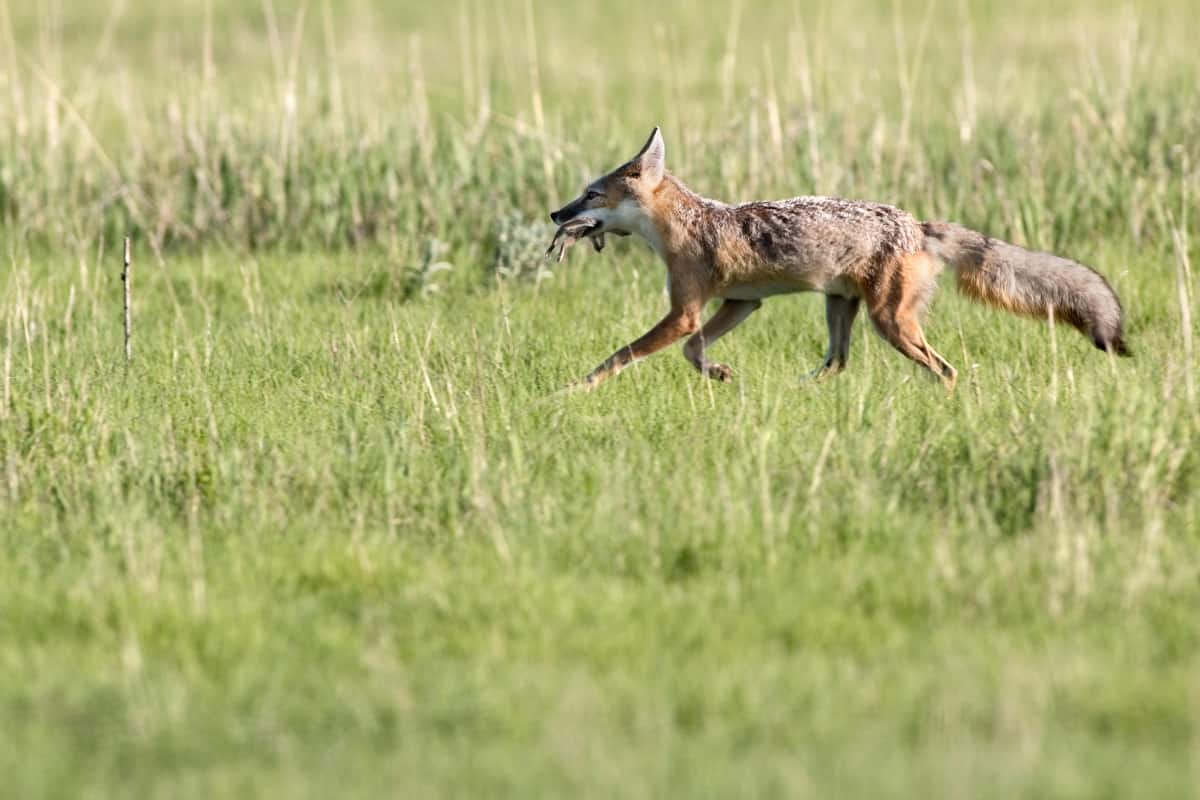
We find more pronounced differences when comparing the running speeds of the coyote and the fox. The fox is known for its incredible swiftness, especially the swift fox (Vulpes velox), one of the fastest fox species. The swift fox can reach speeds of 45 miles per hour (72 kilometers per hour), putting it on par with the coyote’s maximum speed.
The red fox, another common species, has a running speed of around 30 miles per hour (48 kilometers per hour). While this is slower than the coyote’s top speed, it’s important to note that foxes, like coyotes, employ various hunting strategies based on their prey and environment.
Foxes are solitary hunters and rely heavily on their agility and cunning to catch smaller prey like rodents and rabbits. Their ability to change direction swiftly and navigate through dense vegetation enables them to excel in catching elusive prey. Coyotes, with their slightly faster speed and pack-hunting tendencies, have a broader range of potential prey, and their hunting strategies may involve both individual pursuits and cooperative efforts within their social groups. That alters the results for how fast is a coyote in that case.
Also, read the comparison of gray fox vs coyote.
Measuring Coyote Speed

Measuring the speed of a coyote is a fascinating and challenging task that requires careful research methods and accurate recording techniques. In this article, we will explore the various approaches used by researchers to measure how fast can coyotes run, including the recording of previously documented speeds.
Research Methods to Measure Coyote Speed
1. GPS Tracking
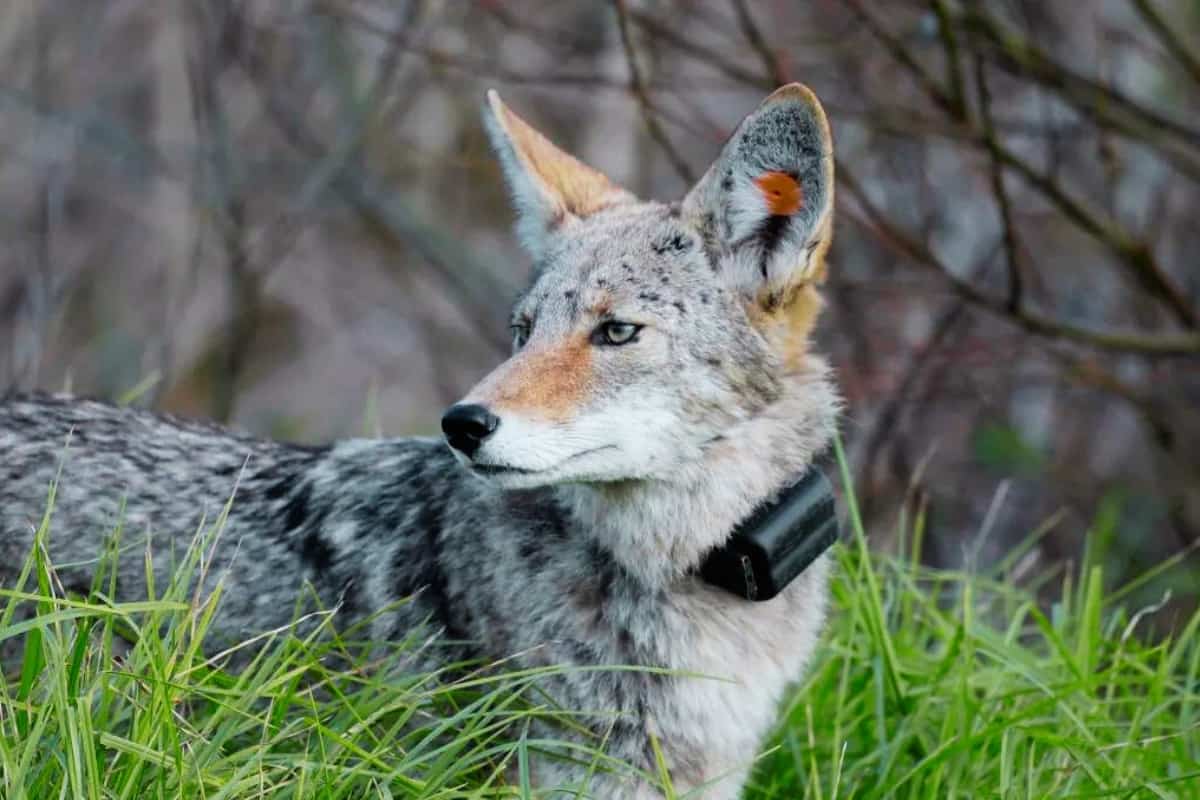
One of the most common research methods to measure coyote speed is through the use of GPS tracking devices. Researchers attach GPS collars to individual coyotes, allowing them to track and record the animal’s movements in real-time. By analyzing the data collected from the GPS, researchers can calculate the speed of the coyote during specific periods of activity.
2. Camera Traps
Camera traps are another valuable tool used to study how fast does a coyote run. These motion-activated cameras capture images or videos of coyotes as they pass by. By carefully analyzing the time stamps on the images or videos and measuring the distance covered by the coyote between frames, researchers can estimate the animal’s speed.
3. Radio Telemetry
Radio telemetry involves attaching radio transmitters to coyotes, which emit unique signals that can be tracked by researchers using specialized receivers to know how fast are coyotes. As the coyote moves, the researchers monitor the signal strength and direction to determine the animal’s location and calculate its speed over certain intervals.
4. High-Speed Cameras
In controlled environments or enclosed spaces like wildlife sanctuaries or research facilities, high-speed cameras can be utilized to record coyotes running at full speed. These cameras capture detailed slow-motion footage, allowing researchers to precisely analyze running patterns and calculate their speed.
Recorded Speeds
Over the years, researchers and wildlife enthusiasts have recorded numerous instances of coyotes displaying their incredible speed in the wild. These recorded speeds are often obtained through direct observations or anecdotal evidence. While they may not be as precise as data gathered through scientific research methods, they still provide valuable insights into the agility and swiftness of these canines.
On average, recorded speeds of coyotes range from 40 to 45 miles per hour (64 to 72 kilometers per hour) during short bursts of acceleration. However, it’s essential to remember that these speeds represent maximum capabilities and are not sustained for long distances.
Conclusion
In conclusion, the coyote’s ability to run at speeds of 40 to 45 miles per hour showcases its remarkable agility and effectiveness as a hunter. Their physiology, combined with external factors such as terrain and motivation, allows them to reach such impressive speeds. Understanding the significance of speed in a coyote’s survival emphasizes the importance of their exceptional running capabilities in the natural world. So, the next time you spot a coyote in the wild, marvel at its incredible speed and give this fascinating creature the respect and admiration it deserves.
FAQs

Ray is an experienced wildlife researcher with a background in veterinary medicine. His contributions have significantly advanced our understanding of various wild animals.


